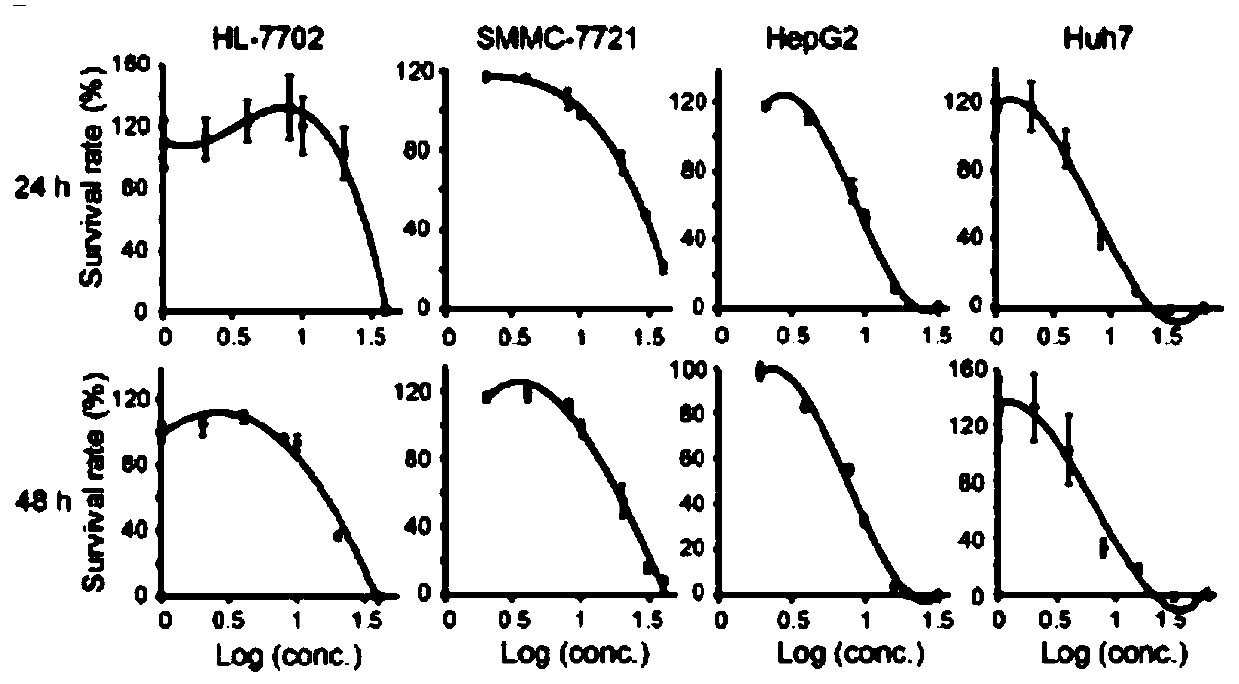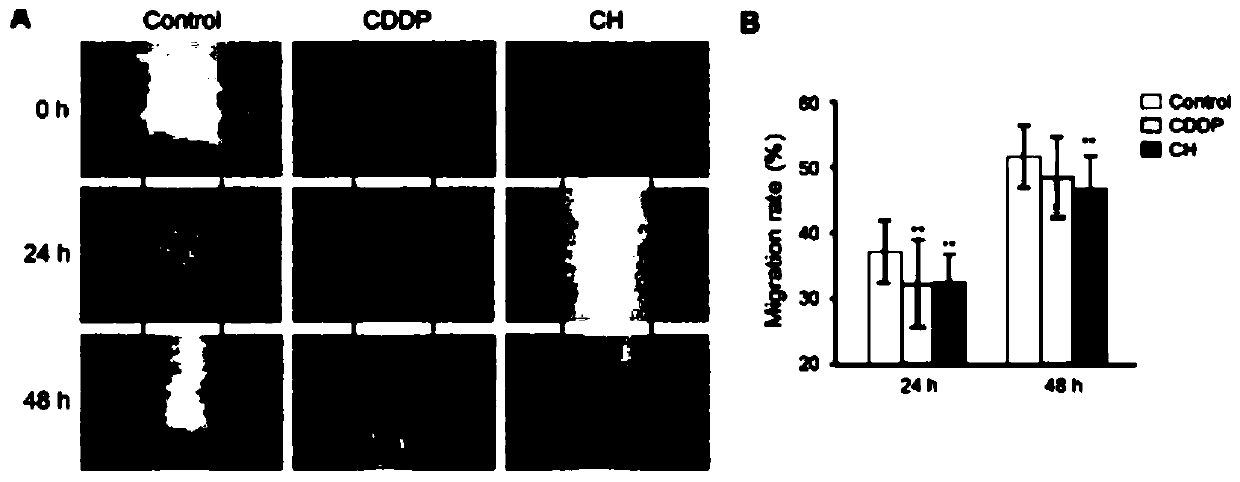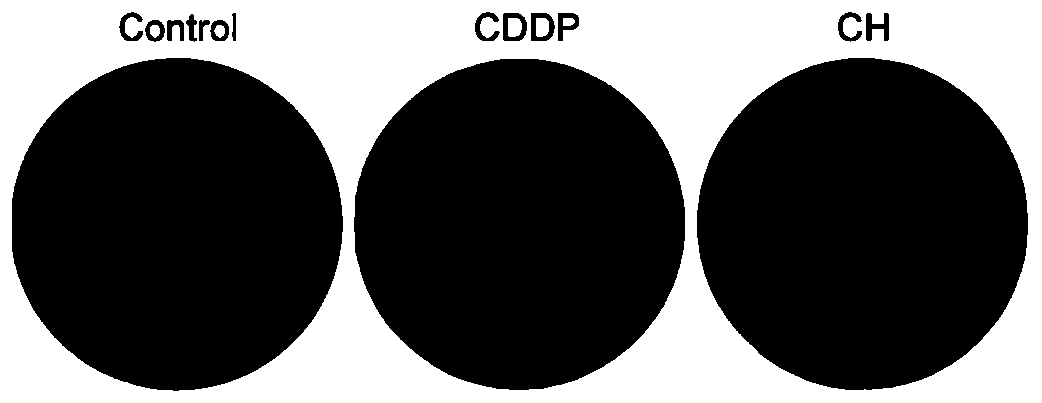Application of combined stephanine and autophagy inhibitor for preparing drugs for treating liver cancer
A technology of autophagy inhibitor and fenugreek, applied in the field of medicine, can solve the problems of reducing the effect of anti-tumor drugs, different conclusions, and not too many reports, and achieves simple and economical acquisition methods, wide sources, enhanced The effect of anticancer action
- Summary
- Abstract
- Description
- Claims
- Application Information
AI Technical Summary
Problems solved by technology
Method used
Image
Examples
Embodiment 1
[0037] Weigh stepherine hydrochloride powder with an electronic balance, add it into DMSO to dissolve, make a mother solution with a concentration of 100mM, and then dilute it with DMSO to different concentrations. The MTT method was used to detect the toxicity of stephine hydrochloride to normal liver cells HL-7702 and liver cancer cells SMCC-7721, Huh7, HepG2 cells for 24h and 48h, and the IC of stephine hydrochloride to different liver cancer cells was calculated 50 value.
[0038] Specific method: Normal liver cells HL-7702 were digested with trypsin and inoculated into 96-well plates, and 0.4×10 cells were inoculated in each well. 4 After culturing overnight to adhere to the wall, add 0-100uM stephine hydrochloride to the culture dish, add 10uL MTT (5mg / mL) when culturing for 24h and 48h respectively, incubate at 37°C for 4h and suck off the culture medium and MTT , add DMSO, react on a shaker at room temperature for 30 minutes, measure the absorbance at 570 nm, and then...
Embodiment 2
[0041] On the premise of Example 1, the present invention further verified that stephine hydrochloride does have an effect on the growth of liver cancer cells, and then further carried out scratch, clone formation, TransWell, and flow sorting experiments to detect apoptotic cells.
[0042] The specific method of the scratch test: first draw a black horizontal line on the bottom of the outer surface of the 12-well plate, then digest the Huh7 cells with trypsin and inoculate 20×10 4 Cells were seeded into 12-well plates and cultured overnight. After the cells adhere to the wall, wash it once with PBS, and then use a 200uL pipette tip to draw a horizontal line on the bottom of the inner surface of the 12-well plate, which is perpendicular to the horizontal line on the outer surface, causing cell scratches. After the process is completed, wash with PBS and divide into 3 groups (control group (indicated by control), cisplatin group (indicated by CDDP), stephine hydrochloride group ...
Embodiment 3
[0048] On the basis of Examples 1 and 2, stephine hydrochloride and autophagy inhibitors were used in combination to inhibit liver cancer cells. The liver cancer cell Huh7 was digested with trypsin, and the cell density was adjusted to 20×10 4 cells / mL, add 100uL / well of cell culture medium into a 96-well plate, remove the culture medium after culturing for 12 hours, and use different concentrations of stephine hydrochloride (m=1-1000) and different concentrations of autophagy inhibitor chloroquine (n=1-1000) mixed according to the ratio of 1:7.5, added to the 96-well plate, after culturing for 48 hours, the survival rate of the cells was measured by MTT, and the survival rate of liver cancer cells when combined with stephine hydrochloride and chloroquine alone , CompuSyn software was used to calculate and analyze the combination index of the two drugs. The combined index analysis chart of stephine hydrochloride and autophagy inhibitor combined drug Figure 6 As shown, diffe...
PUM
 Login to View More
Login to View More Abstract
Description
Claims
Application Information
 Login to View More
Login to View More - R&D
- Intellectual Property
- Life Sciences
- Materials
- Tech Scout
- Unparalleled Data Quality
- Higher Quality Content
- 60% Fewer Hallucinations
Browse by: Latest US Patents, China's latest patents, Technical Efficacy Thesaurus, Application Domain, Technology Topic, Popular Technical Reports.
© 2025 PatSnap. All rights reserved.Legal|Privacy policy|Modern Slavery Act Transparency Statement|Sitemap|About US| Contact US: help@patsnap.com



